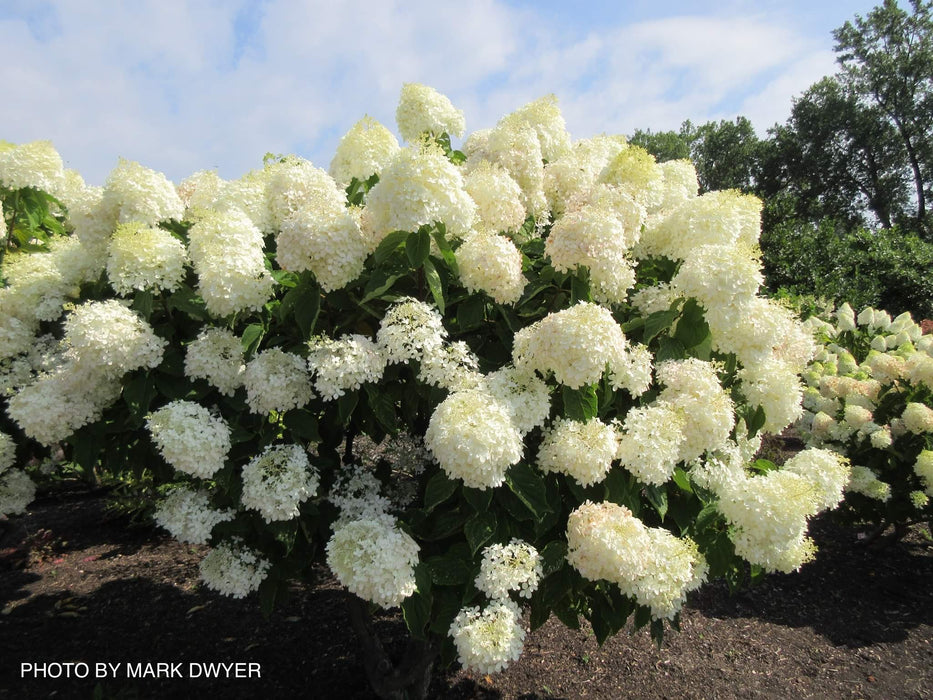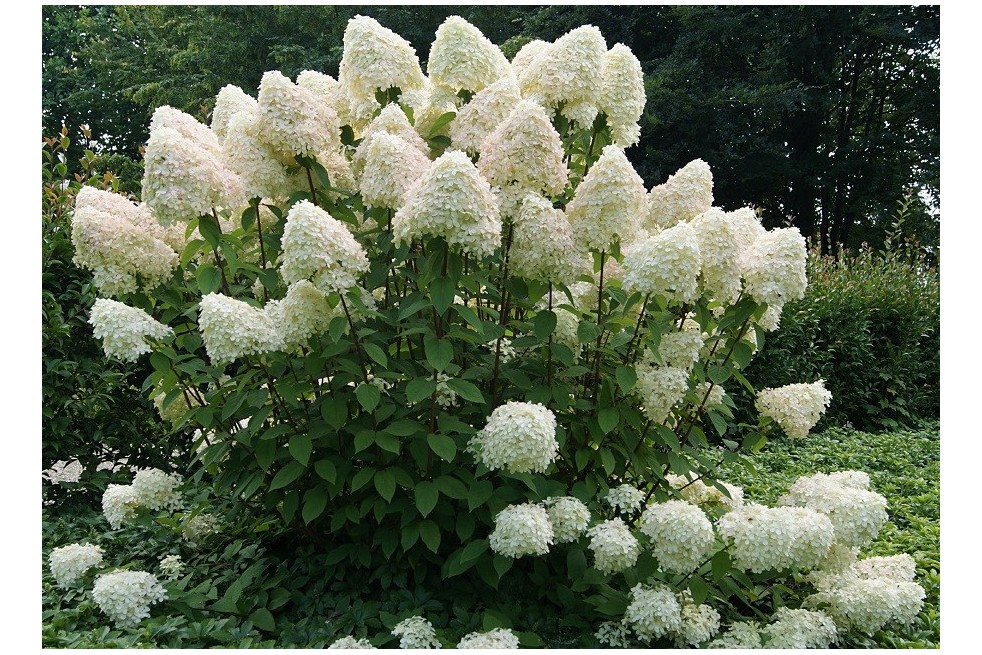Phantom Panicle Hydrangea: The Ghostly Flower That Will
Phantom Panicle Hydrangea: The Ghostly Flower That Will
Intro
The Phantom Panicle Hydrangea is a truly unique and beautiful plant. With its ghostly white flowers, it is sure to add a touch of magic to any garden. But this plant is more than just a pretty face. It is also relatively easy to care for, making it a great choice for even the most novice gardener.
In this blog post, we will take a closer look at the Phantom Panicle Hydrangea. We will discuss its history, its unique features, and how to care for it. We will also provide some tips on how to use this plant to create a stunning garden display.
History
The Phantom Panicle Hydrangea was first discovered in the Netherlands in 1990. It was bred by Peter Zwijnenburg Jr., a local nurseryman. Zwijnenburg was looking for a panicle hydrangea with white flowers that would be upright and sturdy. He found this plant in a seedling bed and named it "Phantom" because of its ghostly appearance.
The Phantom Panicle Hydrangea quickly became popular in the Netherlands. It was awarded an Award of Merit by the Royal Horticultural Society in 2008. In recent years, it has also become popular in the United States.
Unique Features
The Phantom Panicle Hydrangea has a number of unique features that make it stand out from other hydrangeas. First, its flowers are a ghostly white color. This is due to the fact that the plant contains a high concentration of anthocyanins, which are pigments that give flowers their color.
Second, the Phantom Panicle Hydrangea is upright and sturdy. This is in contrast to many other panicle hydrangeas, which can be prone to drooping. The Phantom Panicle Hydrangea's upright growth habit makes it a great choice for use in borders or as a specimen plant.
Third, the Phantom Panicle Hydrangea is relatively easy to care for. It is hardy in USDA zones 3-8 and can tolerate a wide range of soil conditions. It does best in full sun, but can also tolerate partial shade.
How to Care for Phantom Panicle Hydrangea
The Phantom Panicle Hydrangea is relatively easy to care for. Here are some tips:
- Plant in full sun or partial shade.
- Water regularly, especially during hot, dry weather.
- Fertilize once a year in spring with a balanced fertilizer.
- Prune in late winter or early spring.
Using Phantom Panicle Hydrangea in the Garden
The Phantom Panicle Hydrangea can be used in a variety of ways in the garden. It is a great choice for borders, specimen plantings, or cut flowers. It can also be used to create a stunning focal point in your garden.
Here are some ideas for using Phantom Panicle Hydrangea in the garden:
- Plant in a border with other white flowers, such as roses or lilies.
- Use as a specimen plant in a sunny spot in your garden.
- Cut the flowers and arrange them in a vase.
- Plant in a mixed container with other hydrangeas and annuals.
Conclusion
The Phantom Panicle Hydrangea is a beautiful and versatile plant that can be used in a variety of ways in the garden. It is relatively easy to care for and is hardy in a wide range of climates. If you are looking for a unique and stunning plant to add to your garden, the Phantom Panicle Hydrangea is a great choice.
Phantom panicle hydrangea is a stunning shrub that is sure to turn heads in your garden. With its enormous flower heads that can reach up to 15 inches long, this hydrangea is a sight to behold. The flowers start out creamy white and gradually turn pink as the summer progresses, creating a beautiful and unique color display.
Phantom panicle hydrangea is relatively easy to care for and is hardy in USDA zones 3-8. It prefers full sun or partial shade and well-drained soil. To encourage the largest possible flower heads, prune the shrub back hard in late winter.
If you are looking for a beautiful and easy-care hydrangea for your garden, phantom panicle hydrangea is a great choice. For more information about this amazing shrub, please visit .
FAQ of phantom panicle hydrangea
Question 1: What are the most notable features of Phantom Panicle Hydrangea?
Answer: Phantom Panicle Hydrangea is a deciduous shrub that is known for its large, white flower panicles that can grow up to 15 inches long. The flowers start out creamy white and then gradually turn to shades of pink as they age. Phantom Panicle Hydrangea is also a very hardy shrub, and can tolerate a wide range of temperatures.
Question 2: Where is the best place to plant Phantom Panicle Hydrangea?
Answer: Phantom Panicle Hydrangea can be planted in full sun or partial shade. However, it is important to note that the flowers will be more vibrant in full sun. The plant also prefers well-drained soil that is rich in organic matter.
Question 3: How do I care for Phantom Panicle Hydrangea?
Answer: Phantom Panicle Hydrangea is a relatively low-maintenance plant. However, it is important to water it regularly, especially during the summer months. You should also fertilize the plant in the spring and fall. In addition, you should prune the plant back in the spring to encourage new growth.
Question 4: How do I propagate Phantom Panicle Hydrangea?
Answer: Phantom Panicle Hydrangea can be propagated by rooting cuttings. To do this, take a 4-6 inch cutting from the plant in the spring or fall. Remove the lower leaves from the cutting and dip the end in rooting hormone. Plant the cutting in a well-drained potting mix and keep it moist. The cutting should root in about 4-6 weeks.
Question 5: What are some common pests and diseases that affect Phantom Panicle Hydrangea?
Answer: Phantom Panicle Hydrangea is generally a pest- and disease-resistant plant. However, it can be susceptible to aphids, scale, and powdery mildew. If you notice any pests or diseases on your plant, you can treat them with insecticidal soap or neem oil.
Image of phantom panicle hydrangea
- Image 1: A full-size phantom panicle hydrangea in full bloom. The flowers are a creamy white that is gradually turning pink. The shrub is well-branched and has strong stems that support the heavy flower clusters.

- Image 2: A close-up of the flowers of a phantom panicle hydrangea. The flowers are large and conical, with a mixture of showy but sterile flowers and smaller, fertile ones. The individual flowers are white with a hint of pink.

- Image 3: A phantom panicle hydrangea in the early stages of bloom. The flowers are still creamy white, but they are starting to show a hint of pink at the tips. The leaves are a dark green and provide a nice contrast to the flowers.

- Image 4: A phantom panicle hydrangea in a garden setting. The shrub is surrounded by other flowers, including roses, lilies, and daylilies. The hydrangea is the focal point of the garden, and its large flowers add a touch of elegance.

- Image 5: A phantom panicle hydrangea in a vase. The flowers are arranged in a tall vase, and they make a beautiful centerpiece for a table or mantle. The flowers will continue to bloom for several weeks, and they will gradually change color from white to pink.

Post a Comment for "Phantom Panicle Hydrangea: The Ghostly Flower That Will"